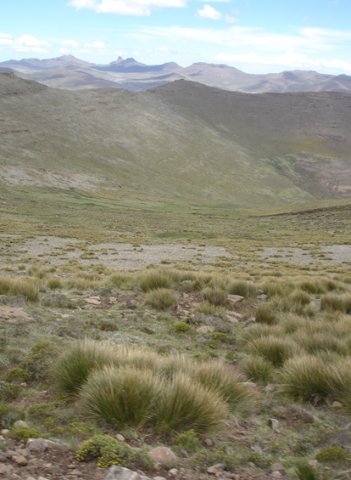Increasing the options

Author: Ivan Lätti
Photographer: Judd Kirkel Welwitch
The patchiness of shorter and longer grass on mountain slopes may seem inconsequential at first glance, but it is ecologically significant. Each type of vegetation cover represents a particular microhabitat associated with its own microclimate. Every niche favours different needs in biodiversity terms, enabling different life forms to thrive.
Soil type patches vary in supporting fallen seeds, sustaining diverse seed banks and thus patchiness in new growth. Germinated seeds thrive where their needs are met. More sunlight on the ground brings heat welcomed by certain annuals, succulents and geophytes. Cooler, covered spots are moist for longer, also sheltered from wind and frost. Tall tussocks allow small vertebrates or insects to hide, congregating in favourite spots. Grazers pick their patches from knowing their tastes. And not all of them eat the same dinners.
These patches resist veld fires better and support vegetation recovery from the unevenness of fire temperatures across the land. And diversity loss from monoculture development doesn’t get a grip. Greater diversity of new life is supported by greater diversity in the living conditions on offer.
This enhances the chances of something alive making it whenever and however the going gets tough. And afterwards, once comfortable conditions are restored, nature celebrates its batch of survivors in a flourish of new leaves and little ones, all sorts. Like fan behaviour after victory in an important sports match.

